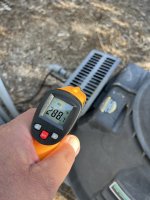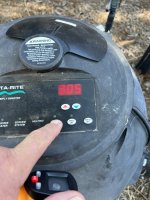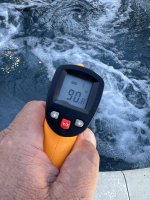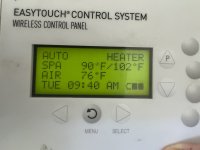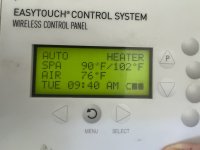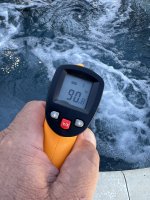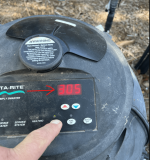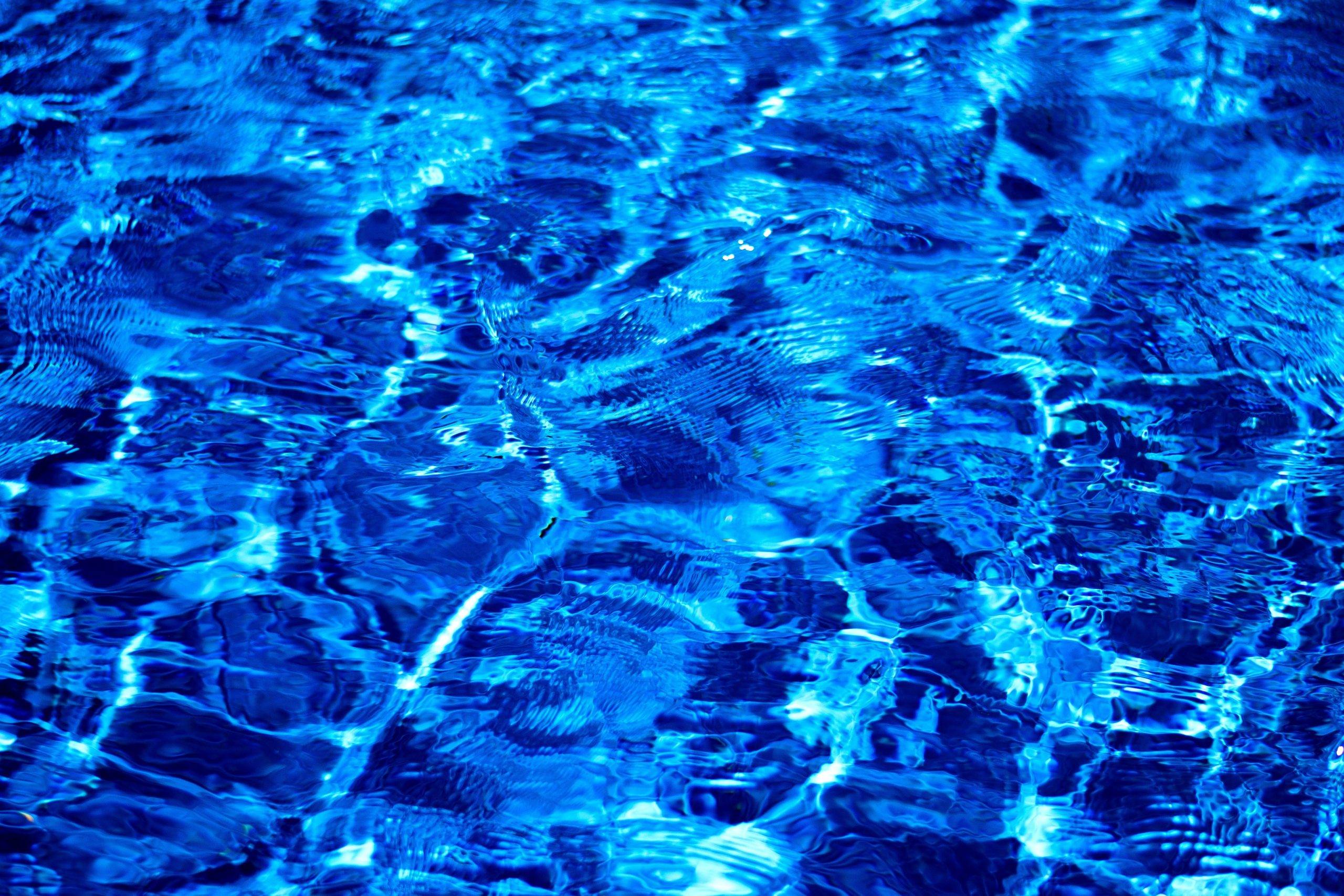Update:
Still need help.....
Took out thermal regulator and the temp went above the prior 92 shut off. I bought a new Thermal Regulator and installed it. Heater shut down at 88 :-(
I took the thermal regulator back out and here is what I am finding as it heats up. Spa Temp 90, Heater shows 88, exhaust shows 288, and the heater when holding down either spa on or pool on shows 305.
Spa Final Temp after about 30 minutes is ....... 100 on the EasyTouch Panel.
So why would the new Thermal Regulator shut down the system at 88/92?
Ideas are appreciated. Pics showing settings as described above.
I have cleaned out the heater base (rodent food remails), checked wires, and replaced the Stack Flu Sensor. Still shuts down at 92 degrees. The other think I noticed was that the temperature reading on the Sta-Rite is 2 degrees off from the Easy Touch panel.
Any suggestions on what my next step should be?
TIA
Still need help.....
Took out thermal regulator and the temp went above the prior 92 shut off. I bought a new Thermal Regulator and installed it. Heater shut down at 88 :-(
I took the thermal regulator back out and here is what I am finding as it heats up. Spa Temp 90, Heater shows 88, exhaust shows 288, and the heater when holding down either spa on or pool on shows 305.
Spa Final Temp after about 30 minutes is ....... 100 on the EasyTouch Panel.
So why would the new Thermal Regulator shut down the system at 88/92?
Ideas are appreciated. Pics showing settings as described above.
I have cleaned out the heater base (rodent food remails), checked wires, and replaced the Stack Flu Sensor. Still shuts down at 92 degrees. The other think I noticed was that the temperature reading on the Sta-Rite is 2 degrees off from the Easy Touch panel.
Any suggestions on what my next step should be?
TIA
Attachments
Last edited:


